What are the 8 types of hydroponics systems?

This post follows our research editorial guidelines.

The wonderful thing about hydroponic gardening is that there’s a system to suit just about any lifestyle or budget. From a sophisticated Aerogarden to homemade Kratky rigs that anyone can join in. Choosing your hydroponic setup doesn’t need to be difficult. It’s just a matter of knowing the benefits and disadvantages of hydroponics systems and picking the best one for you.

Table of Contents
What Is Hydroponic Gardening?
Put simply hydroponics is a system of growing plants without soil. Plants grow in an inert material that holds them securely while a nutrient-rich solution is fed directly to the roots. The differences between each system come down to how they the nutrient solution. Some techniques provide consistent supply and others use a feast-or-famine model that protects roots from fungal issues or damage. But all hydroponic systems work by supplying nutrients with water and avoiding using soil at all.
“Hydroponic systems must deliver the essential components of plant life normally found in the garden. These are light, air, nutrients, and water. All methods of hydroponics have the advantage of efficiently delivering water and nutrients to plants.”
Glen Bupp, Pennsylvania State University Horticulture Extension Educator.
What is the Difference Between each Type of Hydroponic System?
The key difference between hydro systems is how they get their water and nutrients. They can generally be divided into passive and active systems.
Passive systems are simple and often no more than a vessel of water with a plant in it. If you’ve maintained fresh herbs in a glass of water before use then congratulations! You already have a little experience with hydroponics!
Active systems are more complex. They use pumps and filters to circulate the nutrient solution and sometimes use timers and pumps to get it to the roots of the plants. Grow lights and fans to provide ventilation are also frequently used.
8 Types of Hydroponics Systems and How They Work
1: Deep Water Culture (DWC)

Deep Water Culture hydroponics is a system where plants are grown in a net pot of medium suspended in or above a large container of nutrient solution. The roots push down through the basket to sit directly in the water. This allows constant hydration and unlimited access to the nutrients they need to grow.
Deep Water Culture systems can be passive or active. The simplest of all is a Kratky Method of hydroponics. The plant grows directly inside the nutrient tank. As the plants use up the nutrient solution the water level falls and an air gap forms. The gap provides aeration and keeps the roots healthy.
Active systems use water pumps, filters, and air stones or air pumps to keep the root system in good shape. They circulate the water and nutrients to keep it well-oxygenated and consistent.
DWC has its drawbacks. Oversized tanks of nutrient solution are heavy so you can’t go too big. It’s best suited to leaves and fruit too. Lastly, diseases like Pythium and Phytophthora sometimes set up camp in your solution and kill off all your plants.
But for most home growers a DWC rig is the best way to start. They’re excellent for smaller plants like lettuces or herbs, things that are best eaten moments after harvest. Larger setups can support tomatoes, peppers and more. It’s a versatile system that adapts well to most types of growing.
The Top 5 Plants to Grow in Deep Water Culture
2: Nutrient Film Technique (NFT)
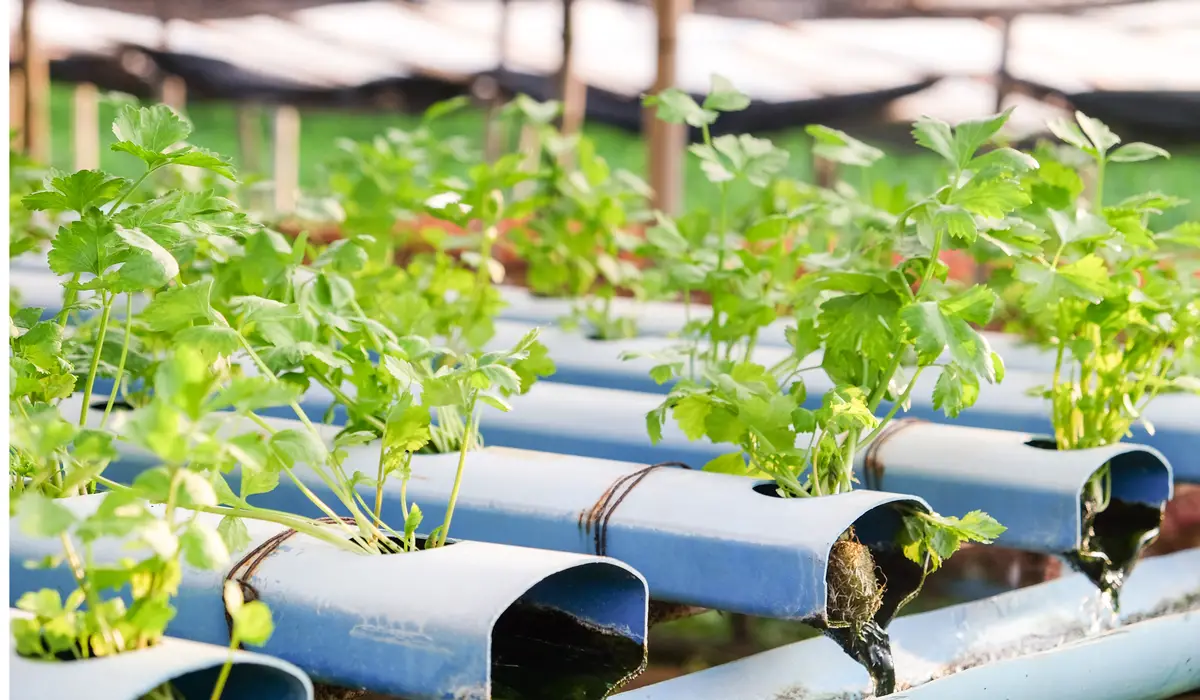
Nutrient Film Technique hydroponic systems keep the roots out of water. Instead, it provides the nutrients in a thin layer at the bottom of a sloped trough or basin called a ‘grow tray’. Plants are suspended in baskets of medium with their roots just resting on the tray. The nutrient solution is pumped to the top and runs downhill through the roots and back into the reservoir.
It’s a very common hydroponic method used in commercial greenhouses as it gives a huge degree of control over the solution’s contents. It can be monitored continuously without having to dip into a large reservoir. It scales well and can allow for some truly expansive gardens!
On the downside, NFT is very power-hungry. It needs a constant movement that’s provided by pumps. It also needs filters to keep any material washed into the reserve from fouling the rig and other equipment to manage the aeration.
That equipment does need to be babied too. Pump failures result in dehydrated plants and blocked drain systems can flood the grow tray and damage plants. It’s a lot to monitor!
The Top 5 Plants to Grow in an NFT System
- Strawberries
- Herbs (such as mint, oregano, and cilantro)
- Tomatoes (dwarf or determinate varieties)
- Peppers (bell peppers, chili peppers)
- Cucumbers
3: Drip System
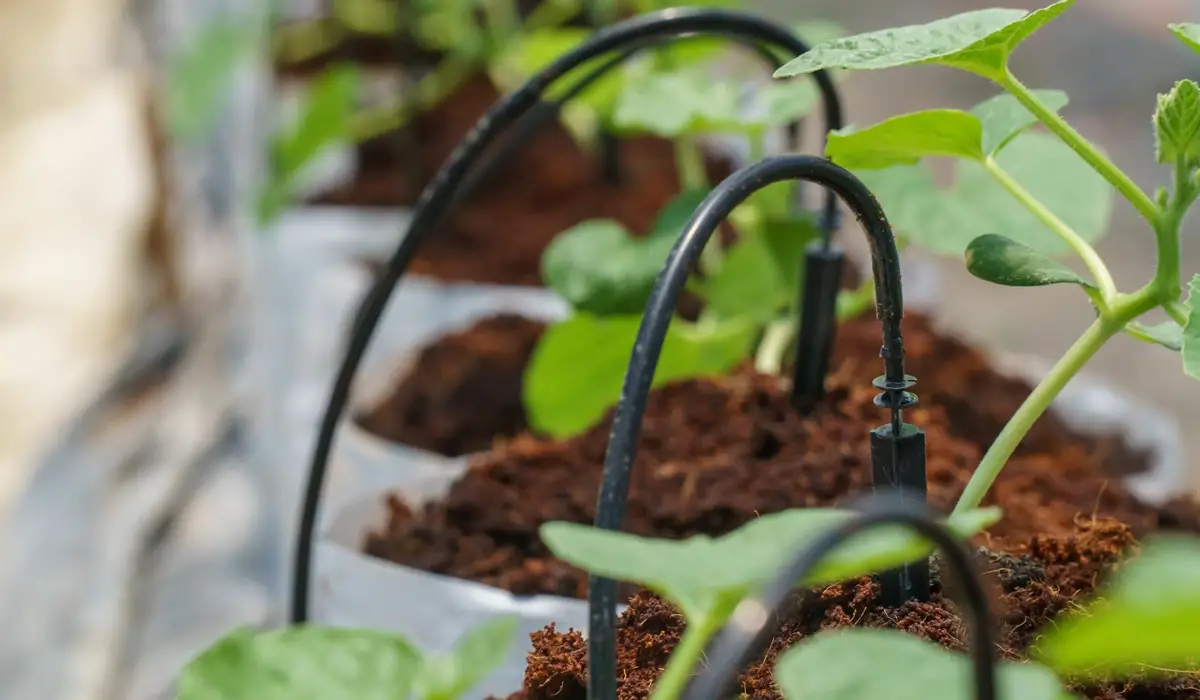
Sometimes referred to as a Dutch bucket system, drip system hydroponics uses large containers of growing medium to hold the plants. In this system, the nutrient solution is delivered by tubing that drips the liquid into the containers. The solution peculates through the lot providing precise hydration and nutrition. ‘Open’ systems discard the leftovers that drain through, and ‘closed’ ones collect it to be re-used. The whole system runs on timers that maintain perfect levels of moisture without wasting a drop.
Larger plants do best in this type of system. The larger buckets give them more room to spread their roots. Drips systems also tend to be very water-wise.
On the downside, big bags of medium can be heavy and hard to work with. Unlike systems where the plants are suspended in the solution, it can be hard to monitor the health of the plant roots. And like an NFT system, you have to be on the ball with your pumps and timers or you risk disaster.
The Top 5 Plants to Grow in a Drip System
- Tomatoes
- Peppers
- Eggplants
- Beans (such as green beans or runner beans)
- Strawberries
4: Ebb and Flow (Flood and Drain)
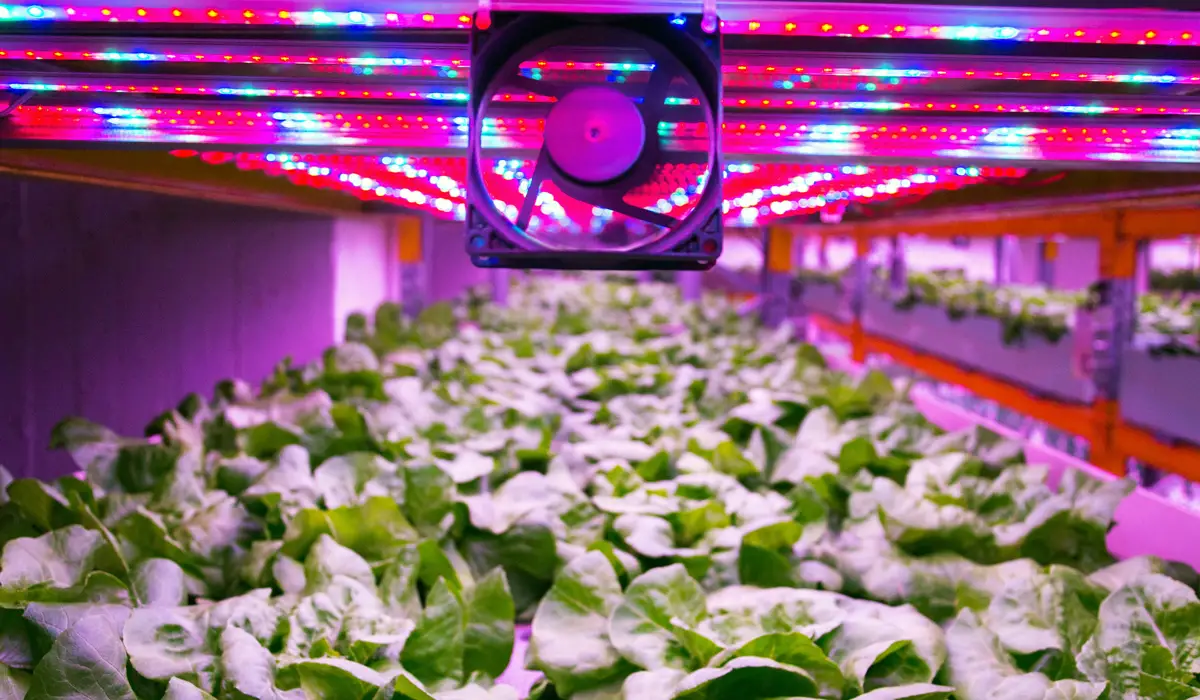
In Ebb and Flow systems, plants are placed in a shallow bed of free-draining substrate, usually a mix of coconut coir, perlite, or sand. The grow tray is flooded and once the medium soaks it in the tray is drained completely. As much of the solution is removed as possible and returned to the reservoir for re-use.
Ebb and Flow systems are often used by commercial hydroponic gardeners for a variety of different crops. This sort of hydroponics offers the same sort of versatility and space savings as DWC without heavy containers of water all over the place.
On the downside, it has a lot of moving parts. The flood/drain cycle must be carefully watched or the crops may wind up dehydrated, over-watered, or even both! Some crops also find the feast-and-famine nature of this system stressful.
The Top 5 Plants to Grow in an Ebb and Flow System:
- Tomatoes
- Peppers
- Cucumbers
- Zucchini
- Melons (such as watermelon or cantaloupe)
5: Wick System

Wick system hydroponics are a passive option that’s great for the home grower. It uses a bucket or bed of growing medium that sits above the nutrient reservoir. A series of wicks run from the liquid up into the medium. Moisture flows up those wicks using capillary action. This creates even moisture around the root system. Wick systems don’t require pumps or filters and the smaller styles don’t need aeration either.
Wick hydroponic systems provide even hydration with no effort whatsoever and is great for fussy indoor plants like calatheas or alocasias. It’s incredibly simple to set up and even larger rigs require little or no monitoring.
It does have a few drawbacks. It can be very easy to overwater plants compared to circulating systems. It can also be hard to keep the nutrients coming for hungrier crops. Large plants also struggle with limited nutrients.
The Top 5 Plants to Grow in a Wick System:
- Herbs (such as basil, parsley, and thyme)
- Leafy greens (lettuce, kale, and spinach)
- Radishes
- Strawberries
- Chives or Onions
6: Aeroponic System
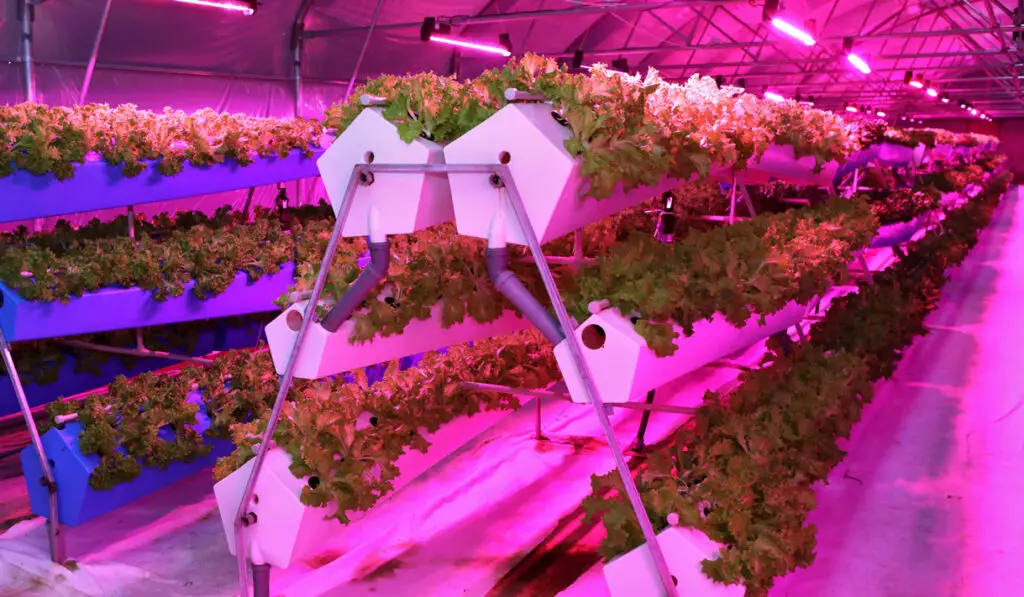
Aeroponics is the most technologically advanced of the different types of hydroponic systems on this list. Plants in this system are held aloft so the roots are suspended in the air below. Nozzles spray the exposed with a fine mist of nutrients and water. The mixture is absorbed immediately with little run-off. Leftovers are collected and returned to the reservoir tank through a recovery system of drains.
Aeroponics are complex to set up but they provide an astonishing boost to growth. Aeroponic systems deliver a growth rate faster than the other six types on this list. It’s very water efficient and wastes little by way of fertilizer.
That said it’s pretty complex. Besides the difficulty of calibrating timers and pumps, it also uses misters that can be prone to blockages if your solution isn’t 100% perfect. Faults almost immediately result in damage to your plants.
Aeroponics systems are also expensive to run. They use a lot of electricity needed to keep all the various bits and pieces running. It’s really best suited to the advanced hydroponic grower who enjoys a technical challenge as much as actually growing their plants.
The Top 5 Plants to Grow in an Aeroponic System:
- Leafy greens (lettuce, kale, and spinach)
- Herbs (such as basil, parsley, and cilantro)
- Strawberries
- Tomatoes (dwarf or determinate varieties)
- Peppers
7: Aquaponics

Strictly speaking, an Aquaponics system combines any of the hydroponic systems from above with an aquaculture setup – that is to say fish tanks!
In Aquaponics water is supplied by a tank of fish rather than a reservoir. The fish are fed as usual and the water containing their waste is circulated into the hydroponic garden. Special bacteria in the medium break down the fish waste into fertilizer. In turn the growing medium and the plants filter the water. It returns to the tank clean and fresh.
It’s easily the most complex of all the systems here. In addition to caring for whatever of the many types of systems you’ve chosen, you also have to take care of a tank of fish. Even the simplistic type of hydroponic systems take on a new degree of complexity once you are relying on them to keep critters healthy too.
You also need a whole lot more room. Like any animal fish need space to move and grow. You can’t tuck it all in a tight corner and hope for the best.
But this kind of hydroponic growth cuts synthetic inputs right down. You don’t need to balance the nutrients because the fish do it for you. Choose the right type and they’ll eat natural feed that is cheap and sustainable. You can also eat or sell them once they’re mature.
The Top 5 Plants to Grow in Aquaponics:
- Leafy greens (lettuce, kale, and Swiss chard)
- Herbs (such as basil, mint, and dill)
- Tomatoes (dwarf or determinate varieties)
- Cucumbers
- Beans (such as green beans or runner beans)
8. Kratky method
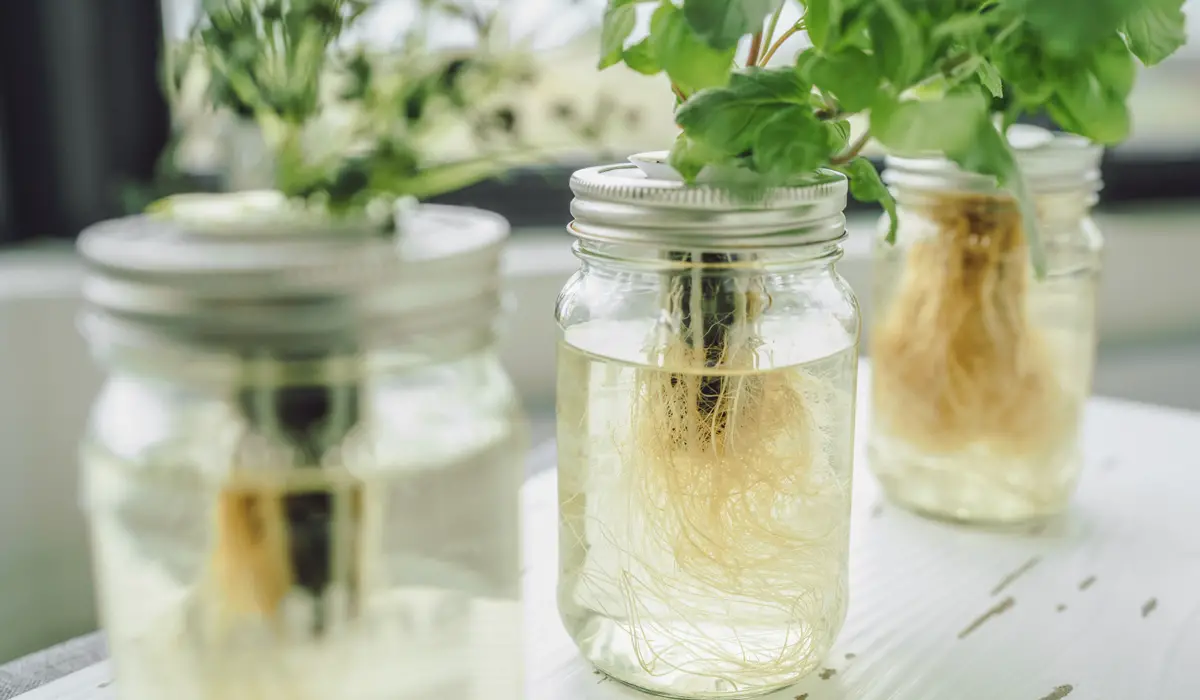
The Kratky method of growing hydroponics is a simple, inexpensive, and effective technique for growing plants without soil. This method relies on the same basic principles of other hydroponic systems; it provides the necessary nutrients needed to support the growth of roots and foliage while suspending the roots into a continuous body of nutrient-rich water.
The major difference between the Kratky method and other hydroponic techniques is the lack of a need for pumps or other equipment. Instead, a container with a shallow reservoir holds plant seedlings in place so that their roots can grow freely in an aerated nutrient solution. This allows for maximum water absorption and oxygenation, thus promoting healthy growth.
The Top 5 Plants to Grow using the Kratky Method:
- Leafy greens (lettuce, spinach, and arugula)
- Herbs (such as basil, cilantro, and parsley)
- Strawberries
- Radishes
- Chives
Now that we’ve gone through the pros and cons of each system,let’s take a look at some common questions.
FAQ
How To Choose a hydroponic system That’s Best for you
Starting your hydroponic journey is a matter of weighing up the pros and cons of the main types of hydroponic setups and working out how that apply to you. Space considerations, your budget, and your experience level will give you clues to work out the most effective hydroponic technique for you.
Beginners do well with passive hydroponic rigs like Kratky setups or Wick hydroponics. If you enjoy playing with gadgets then aeroponics might be a fun choice. And if you already know how to raise fish then an aquaponics setup will be the best of both worlds. If you have money to burn a vertical hydroponics garden will be both functional and beautiful.
What grows well in hydroponics?
Leafy green vegetables like lettuce, spinach and the like grow magnificently in hydro. Herbs also grow well, especially basil and parsley. They’re great type of plant to start your hydro adventure.
Tomatoes, peppers and eggplant also thrive in a variety of different hydroponic systems. They need a bit more work to keep their nutrient levels perfect for the different phases of their life but the rewards are delicious!
It’s something of an ignored area, but ornamental indoor plants also do spectacularly in hydro. Most indoor ornamentals do wonderfully in simple wicking pots, bringing beauty to your home without very much input from you at all.
What does not grow well in hydroponics?
Potatoes, carrots, turnips and other root vegetables are tough to grow using hydroponics. They just don’t get the space to sprawl out and develop their delicious tap roots. They are also uniquely vulnerable to root diseases that strike hydro setups from time to time.
Sprawling vines with large fruit like pumpkins also struggle in hydro. They love to spread out and can develop all manner of diseases in their leaves if they’re overcrowded.
Lastly trees are rotten candidates for hydro. They take a long time to mature and need huge amounts of space for their roots. They also struggle without the microbes found in natural soils.
Final Thoughts
There are so many types of hydroponics that there’s bound to be something for everyone. The 8 different types of hydroponic options listed above are broad categories. Once you get the hang of the techniques behind hydroponics in general it’s easy to adapt and change then to fit your needs and tastes. It won’t take long to work out the best hydroponic practices for your home.
